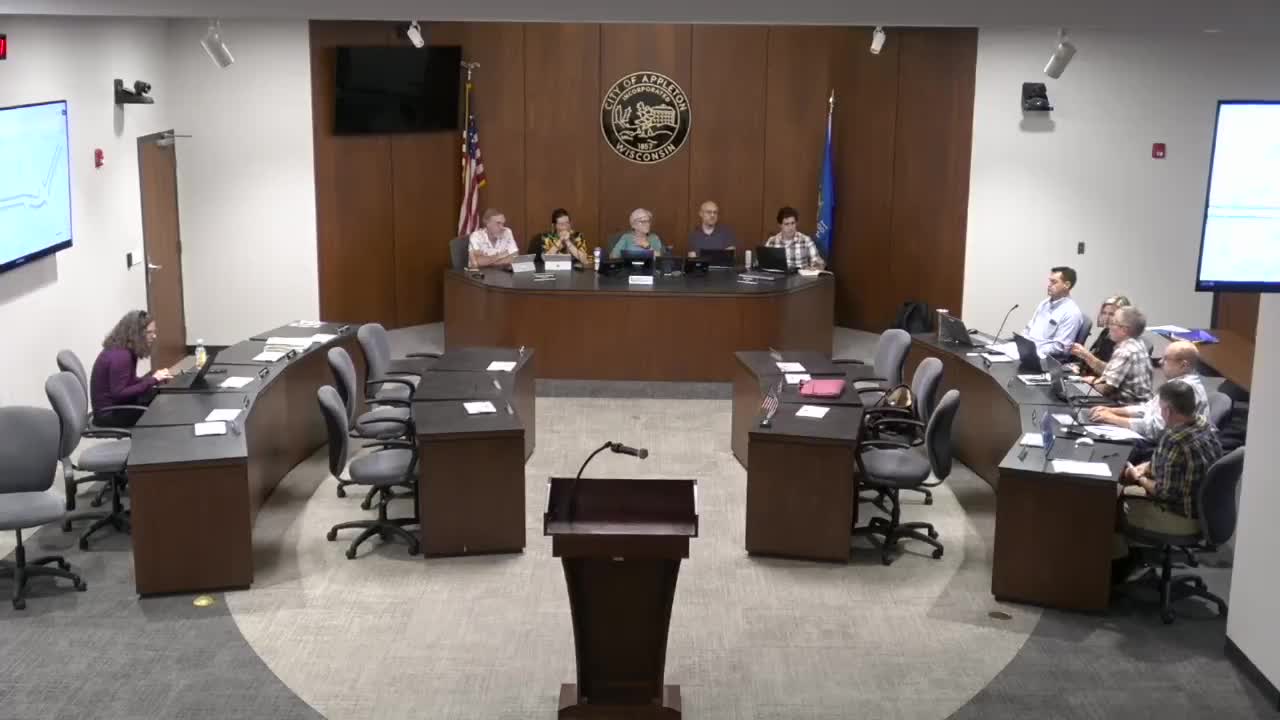City Engineers Discuss Bicycle and Pedestrian Safety in Urban Planning
September 22, 2025 | Appleton City, Winnebago County, Wisconsin
This article was created by AI summarizing key points discussed. AI makes mistakes, so for full details and context, please refer to the video of the full meeting. Please report any errors so we can fix them. Report an error »

The City of Appleton's Municipal Services Committee convened on September 22, 2025, to discuss various transportation and safety concerns within the community. The meeting focused on the design and implementation of new facilities aimed at improving pedestrian and cyclist safety.
The discussion began with an analogy comparing the assessment of facility usage to evaluating traffic on a road that does not exist. Committee members emphasized the importance of qualitative studies that gauge community demand for improved infrastructure, rather than relying solely on current usage statistics of existing, inadequate facilities.
Concerns were raised regarding the safety of pedestrians sharing space with cyclists, particularly in light of the increasing use of e-bikes. One committee member expressed apprehension about the potential dangers of having cyclists "zooming past" pedestrians, highlighting the need for safer shared spaces.
Another member drew parallels to bridge construction, arguing that infrastructure should be designed to induce demand rather than merely reflect current usage patterns. They advocated for creating environments that encourage safe and comfortable use by all modes of transportation, suggesting that thoughtful design could lead to reduced traffic speeds and improved neighborhood safety.
The committee also addressed the challenges of incorporating bike lanes into existing roadways. An engineer noted that while options for physical separation between bike lanes and vehicle traffic were explored, space constraints made it difficult to implement these designs without sacrificing vehicle lanes. The discussion included the potential benefits of reducing vehicle lanes to enhance traffic calming, although the engineer pointed out that the specific segment under consideration was not long enough to warrant significant changes.
Overall, the meeting underscored the committee's commitment to enhancing transportation safety and accessibility in Appleton. The discussions highlighted the complexities of urban planning and the need for a balanced approach that considers the needs of all road users. Further studies and community feedback will likely inform future decisions as the city moves forward with its transportation initiatives.
The discussion began with an analogy comparing the assessment of facility usage to evaluating traffic on a road that does not exist. Committee members emphasized the importance of qualitative studies that gauge community demand for improved infrastructure, rather than relying solely on current usage statistics of existing, inadequate facilities.
Concerns were raised regarding the safety of pedestrians sharing space with cyclists, particularly in light of the increasing use of e-bikes. One committee member expressed apprehension about the potential dangers of having cyclists "zooming past" pedestrians, highlighting the need for safer shared spaces.
Another member drew parallels to bridge construction, arguing that infrastructure should be designed to induce demand rather than merely reflect current usage patterns. They advocated for creating environments that encourage safe and comfortable use by all modes of transportation, suggesting that thoughtful design could lead to reduced traffic speeds and improved neighborhood safety.
The committee also addressed the challenges of incorporating bike lanes into existing roadways. An engineer noted that while options for physical separation between bike lanes and vehicle traffic were explored, space constraints made it difficult to implement these designs without sacrificing vehicle lanes. The discussion included the potential benefits of reducing vehicle lanes to enhance traffic calming, although the engineer pointed out that the specific segment under consideration was not long enough to warrant significant changes.
Overall, the meeting underscored the committee's commitment to enhancing transportation safety and accessibility in Appleton. The discussions highlighted the complexities of urban planning and the need for a balanced approach that considers the needs of all road users. Further studies and community feedback will likely inform future decisions as the city moves forward with its transportation initiatives.
View full meeting
This article is based on a recent meeting—watch the full video and explore the complete transcript for deeper insights into the discussion.
View full meeting
